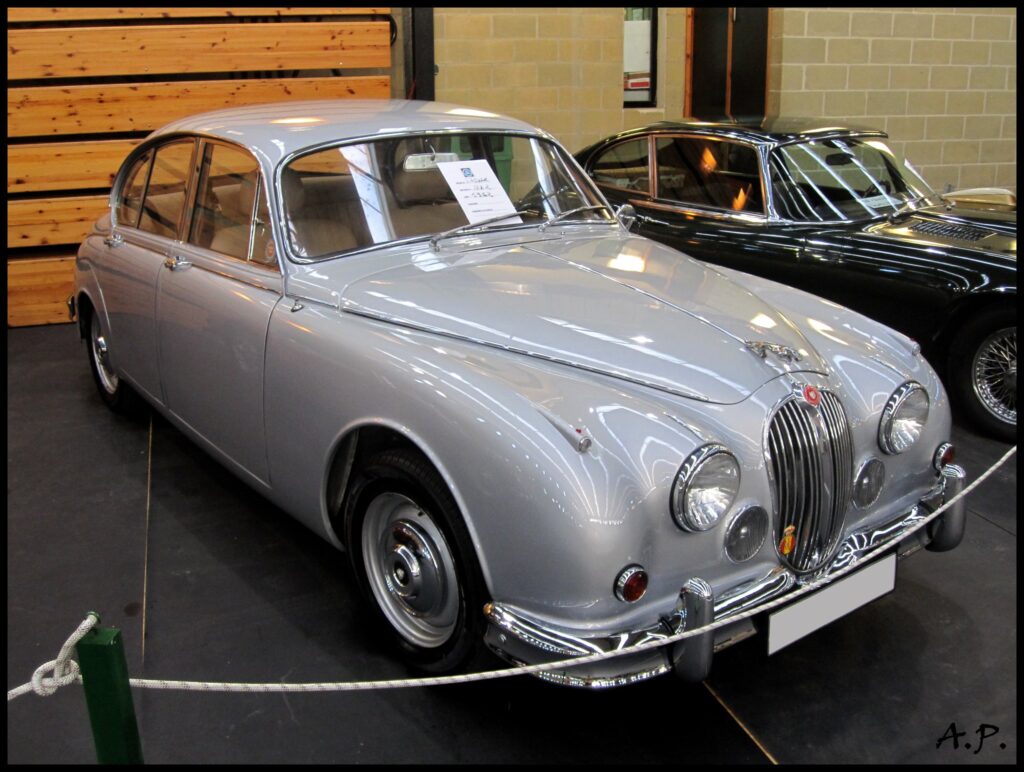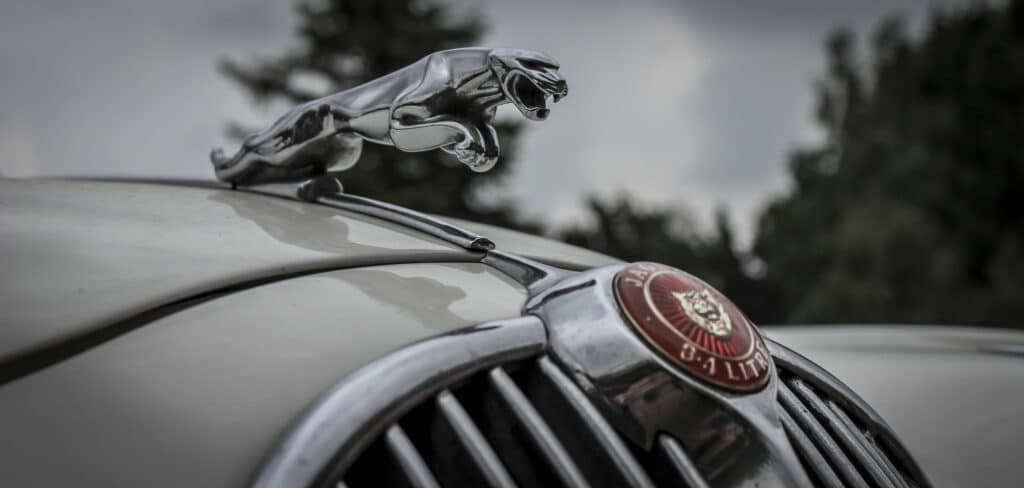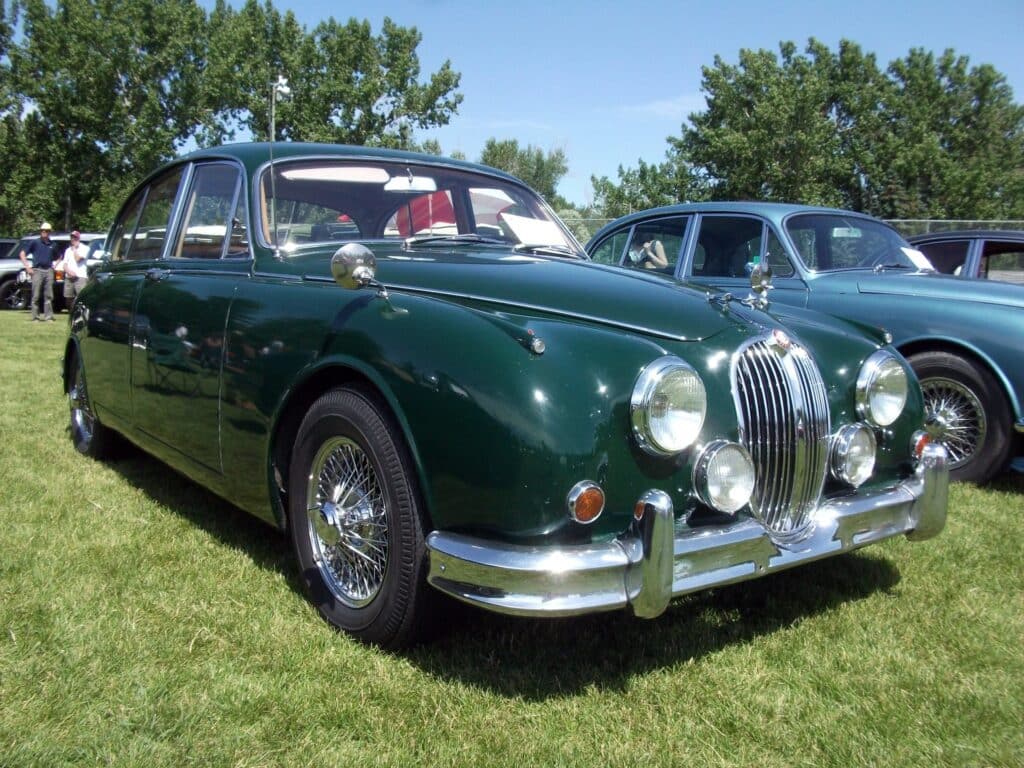Stereotypes and cliches have always been a part of our society, with those about cars and the people driving them not being any exemption. This is especially true for major automotive brands, and, predictably, rarely are positive. For instance, BMW drivers are aggressive toward other motorists and never use their indicators. Saabs are driven by sophisticated people, such as architects or designers. And a person driving a Jaguar is probably involved in a business whose legality may be questionable. This stereotype, like most others, is unjustified, as nothing suggests Jag drivers are less law-abiding than others. Still, some of their models contributed to such an image, and Jaguar MKII is one of them. While the manufacturer clearly didn’t intend for this elegant car to be perceived as such, there are several reasons why it did.
Jaguar MKII – the Background
Jaguar traces its roots back to the early 1920s when Sir William Lyons started making sidecars for motorcycles with his business partner. Later, they expanded to manufacturing low-cost cars using sourced chassis and mechanics, with only the body being their in-house creation. After World War II, the company, now renamed Jaguar, started building cars from the ground up. And judging by what quickly came from their factory, they were pretty good at it. For instance, in the 50s, the Jaguar made a successful series of XK open-roof 2-seater, which eventually evolved into the legendary E-type. Or a high-performance XKSS, the fastest road-going car in its time.
And while these cars were successful and generated nice income, William Lyons, aka Mr.Jaguar, was adamant about creating a sedan with sporty credentials. This would be a car that combines practicality and performance, delivered in an elegant wrapping. Or, as he nicely summed it up – Grace . . . Space . . . Pace. One of the first cars designed and made adhering to this new philosophy was the Jaguar MKI, which was introduced in 1955. This car was ahead of its time, inside and out, which was quickly recognized by buyers. It also proved the sporty-sedan idea had huge potential and that all future models should adhere to it. So, it’s no surprise that when a succeeding MKII Jaguar was introduced, it looked similar to the car it replaced. There were, however, many evolutionary changes, which made it better and ensured its place in the automotive Hall of Fame.
Jaguar MKII on the outside
Measuring 15 feet in length, the MKII had all the prepositions to fulfill one of Mr. Jaguar’s first requirements – space. But it’s not the size that makes this car spacious as the way it is cleverly used. Every body panel is sculpted to provide as much room as possible while not compromising looks. As a result, the Jaguar MKII had enough space for five grownups and their luggage. This made it excellent for long journeys or, as initially intended, as a fast executive car.
Onto the following requirement – grace – which is best described by the fact this is, by many, one of the most iconic Jaguars ever made. With its sleek body line and low silhouette, the car appears like it’s moving, even when standing still. It’s perfectly proportioned and streamlined from any angle, with nothing sticking out of its place.

But with a double pair of headlights and a narrow, bending grille, the front end is, by far, the most formidable. The back ends with an arched trunk lid and quarter panels that hold vertical tail lights. The steel body is complimented by many chrome details, such as the iconic ‘Jaguar’ badge on the fenders and a chromed strip along the car’s side. These finishing touches only accentuate how gracious and elegant the Jaguar MKII is.
The Jaguar MKII’s mechanics
The final part of the equation – pace – is, predictably, delivered by the mechanics underneath the masterfully sculpted body. The MKII is powered by the famous XK engine, which was Jaguar’s own design and, in a way, an engineering masterpiece. It was designed and developed based on knowledge gained during World War II when Jaguar’s engineers were servicing wartime machinery. They wanted this in-line six to be robust, reliable, and, when needed, powerful. And the fact Jaguar used these engines for more than four decades suggests they’ve succeeded.
The Jaguar MKII was available with three variants of the XK engine, with capacities of 2.5, 3.4, or 3.8 liters. This difference, predictably, also determined the power output, which ranged from 120 to 220 horsepower. These were paired with a manual transmission or, as an extra-cost option, an automatic. The cars’ name and trim level, which consisted of 240, 340, and 380, would intuitively give away the engine capacity.

Furthermore, to make it stop as effectively as it did go, the Jaguar MKII had disc brakes all around. Although these were then already becoming a norm for sports cars, it wasn’t common among luxurious sedans and similar vehicles. And to emphasize this feature, Jaguar fitted the MKII with a dedicated trunk emblem reflecting it. Its purpose, though, wasn’t to show off or anything similar. Instead, the disc-brake sticker should warn the driver behind the Jag of its rapid-stopping capabilities and prevent rear-end crashes.
The front suspension, with double wishbones and coil springs, was a carryover from the outgoing MKI model. Still, some upgrades, such as tweaks to the geometry to improve the cornering, were made. It’s much the same in the back, where the Jaguar MKII still had a live axle, like the MKI it replaced. But this one was considerably wider, which helped cure the low-speed understeer the outgoing car suffered from. The 380 models were equipped with limited split differentials, a feature particularly helpful on loose surfaces.
What gave the Jaguar MKII its reputation?
With its features and upgrades over the previous generation, Jaguar MKII was genuinely worthy of the sports sedan title. The most powerful model, the 380, would go from 0 to 60 in less than 9 seconds and could easily reach 125 mph. Coupled with a responsive suspension and sharp brakes, this made the MKII fast on every road. But it also had a spacious interior, with enough room for five persons and a large trunk. All of this, quite accidentally, made it the perfect getaway car, often chosen by criminals when doing bank robberies. The fact was that, at the time, the police didn’t have anything that could even remotely keep up with the Jaguar MKII. Much like it was with Lotus Carlot a couple of decades after. And to deal with these eluding Jags, the police consequently got their own fleet of MKII cars.

Then, there were appearances in some of the best movies ever made. In The Italian Job, the main bad guy and his sidekicks are frequently seen driving a black Jaguar MKII 240. And a red one was an integral part of the Get Carter movie set, as a car driven by the character portrayed by Michael Cane.
Buying a Jaguar MKII today
A shy of 84,000 Jaguar MKII sporty sedans was made during its 8-year-long production run. But, given the time these cars were usually used daily, over time, many were lost. As a rough estimate, less than half of them are still on the road today or in a restorable condition. Currently, prices for a Jaguar MKII range from $30,000 to $70,000, depending on their condition and trim level. And the examples in pristine conditions are sometimes sold for well over $100,000.
Jaguar MKII – in short
Jaguar MKII is a British-made sports saloon made between 1959 and 1967. On the outside, it had an elegant and sleek body whose styling was ahead of its time. Underneath, it was powered by Jaguar’s iconic XK engine, paired up with superb suspension and sharp brakes. As such, the Jaguar MKII was the go-to choice who wanted style, performance, and practicality in one package.





